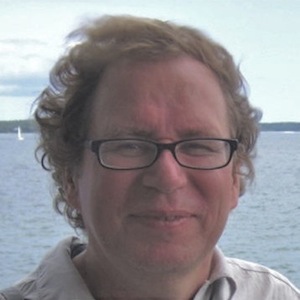Peter Beerli, PhD 
Professor
Florida State University
Dept. of Scientific Computing
Website: people.sc.fsu.edu/~pbeerli
What inspired you to start research in computational biology?
In the early nineties, I started my career as an evolutionary biologist working with water frogs in the Mediterranean region. I calculated degree of relationship and divergence times among different water frog populations living on different islands for which we knew when they had become isolated from the mainlands by salt water. In the course of these investigations I realized that the software then available was utterly inadequate to give me estimates of model parameters that seemed important. My interest in computers and mathematics led me consequently on a trajectory to become a computational biologist developing new methods but also present these new methods in software that is usable by many researchers.
What are 5 important skills needed for your research?
- Understanding the biology: math and computer skills alone do not help to solve computational biology tasks.
- Mathematics and Probability theory; I wish I had better training in both during my undergraduate years.
- Knowing different computer program languages helps you to pick the best language for the task at hand. I started out with Fortran, like to code in C and python, and recently looked at Julia.
- Writing and presentation skills: being able to present and communicate your ideas is essential.
- Being stubborn and keep continuing whatever you think is a good idea; although let others help you to achieve your goal.
How did you learn the computational and quantitative skills necessary for your work?
During my early college years I wanted to use the main frame computer at University Zurich, Switzerland (this was before personal computers, but shortly after using punch cards). I wanted to solve numerical mathematical problems that came up during my biology courses. Eventually I got an account and within a few weeks I learned Fortran and several scripting languages to handle my jobs at the computer center. During this time I was also a teaching assistant for biomathematics (the Insitute for Mathematics paired a biologist with a mathematician) to run tutorial sessions for the students. I learned a considerable amount of statistics and probability theory from these interactions. After a short-time programming job at a Swiss Bank that soon turned out to be not very challenging, a friend and I started an ecological consulting firm that build and maintained relational databases of biological inventories of frogs and reptiles data among others. After I finished my PhD thesis on water frog divergence times, I became a postdoctoral researcher at the University of Washington, Seattle working with Joe Felsenstein, where I learned about the coalescent and honed my computer and math skills with daily interactions with him, Mary Kuhner, and Jon Yamato. I owe them a debt of gratitude because these interactions certainly defined my computational and mathematical background. It seems that most of my skills, in particular all computational skill, were learned outside the conventional class room setting.
What important questions do you address in your research?
I am interested how we can analyze complex population genetic models using genetic/genomic data and also how to compare such models efficiently. I prefer genealogical (coalescent) approaches over allele/site-frequency based approaches believing that separating mutation processes from the genealogical process gives more choices in analysis. My software development is aimed at methods that can handle thousands of loci for models with many parameters.
With my students, we explore inference methods that can incorporate uncertainty caused by sequencing errors and model assumption violations.
I am still interested how water frogs colonized Europe after the last glaciation, I have now the tools but not yet the data. I have a long standing collaboration with Joerg Ploetner, Leibniz-Institut für Evolutions- und Biodiversitätsforschung an der Humboldt-Universität in Berlin.
Additional thoughts...
I am happy to take graduate students (https://www.sc.fsu.edu/graduate/phd) who have strong skills and/or interest in applied mathematics and are interested in population genetics or phylogenetics to work on model selection and averaging problems. The core education in our PhD program is focused on computational mathematics with many applied specializations. Within our department of Scientific Computing, about a 1/4 of the faculty (Beerli, Lemmon, Meyer-Baese, Slice) are working on population genetics, phylogenetics, medical imaging, and morphometrics. We have close ties to the biology department on campus.
